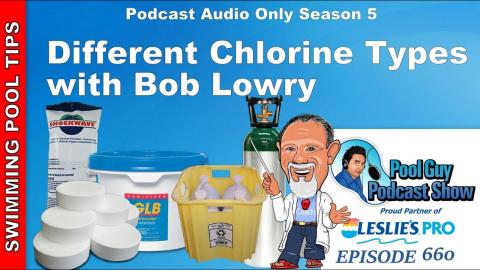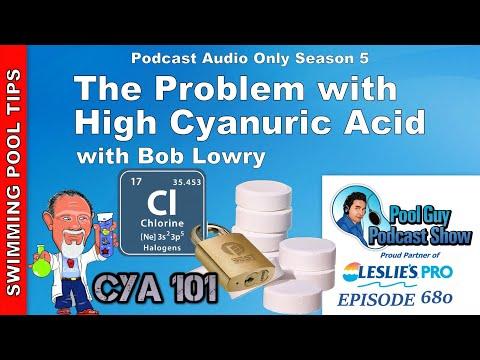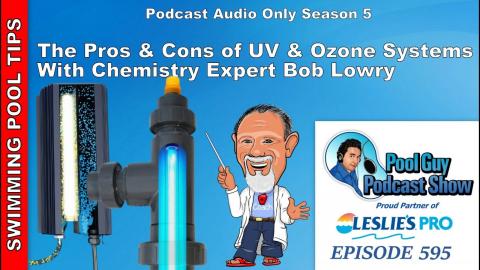Why is pH so Important in Balancing Your Pool With Chemistry Expert Bob Lowry
Description
Swimming pool pH is often a test factor that is misunderstood or not given the proper attention. We know it is one of the big 3 test factors alongside Chlorine and Alkalinity but why I the pH important to measure and keep in the range each week? I go over pH in-depth with chemistry expert Bob Lowry.
Bob Lowry has created over 100 chemicals used in today’s Pool & Spa Industry and has written over 20 books on pool & spa chemistry. He has been in the industry for over 47 years and is the Lead Consultant at Lowry Consulting Group, leads the Pool Chemistry Training Institute, and has created the Certified Residential Pool & Spa Certification Program. Learn more at https://pcti.online/
Here are some other recordings I did with Bob Lowry:
pH and Why it is So Important in Balancing a Pool With Chemistry Expert Bob Lowry (this video):
https://www.buzzsprout.com/110832/7361140
Raising and Lowering the pH in a Pool With Chemistry Expert Bob Lowry: https://www.buzzsprout.com/110832/7361284
The Different Chorine Types With Chemistry Expert Bob Lowry: https://www.buzzsprout.com/110832/7361323
Non-Chlorine Shock and Shocking a Pool with Chemistry Expert Bob Lowry:
https://www.buzzsprout.com/110832/7361437
Saltwater Generators Pros and Cons with Chemistry Expert Bob Lowry:
https://www.buzzsprout.com/110832/7361707
pH is the most important test factor for your swimming pool and if it gets out of balance there are many negative effects that you will encounter. The ideal pH is 7.5.
Low pH will cause:
Corrosive Water
Stains
Etched plaster
Eye & Skin Irritation
Cloudy Water
Increased Chlorine Activity
Destruction of Total alkalinity
Stretching of Vinyl Liners
Blistering of Fiberglass Pools
High pH will cause:
Scale Formation
Stains
Cloudy Water
Short Filter Cleaning Cycles
Eye & skin Irritation
Poor Effective Chlorine
Testing for pH:
Testing once a week is ideal. For a new pool start-up testing daily for the first two weeks is recommended. But once a week will give you a good indication of how stable the pH is in the pool water. There are various ways of testing the pH; test Strips, basic test kits, and Taylor Kits that use reagents. Alternate testing can be done with the ColorQ Pro7 Photometer testing and Digital pH testers.
Lowering high pH:
If the pH starts to get high in your pool the only way to lower it by adding acid. Either a dry acid or liquid acid. Muriatic Acid of 31.45% is the most common acid used to lower the pool's high pH. Dry acid or Sodium Bisulfate is the dry form of acid that can be added to lower the pH. Some test kits like the Taylor K-2006 will have an Acid Demand Test. This is a reagent test that will tell you how much acid to add to your pool to lower the pH. A chart is included with pool gallons and how many pint or quarts to add depending on the test results.
Raising low pH:
If your pH is low you can raise it up using a base. A base is the opposite of acid and it will raise the low pH up in your pool rapidly. The best base is Borax as it will raise the pH without raising the Total Alkalinity. Baking Soda (Sodium Bicarbonate) works well also but it is mainly used for raising the Alkalinity and requires large amounts to raise the pH. Soda Ash (Sodium Carbonate) raises the pH well but it also raises the pool's Alkalinity up so use Soda Ash if Borax is not available in your area.
Bob Lowry has written extensive Tech Bulletins and here is an excerpt from one on pH for you.
Source:
https://poolchemistrytraininginstitute.com/adjusting-ph-and-alkalinity-in-swimming-pools/
“You would think that adding muriatic acid, dry acid, soda ash, or even bicarb for adjusting pH and alkalinity would be a simple calculation. This is reinforced by the fact that there are charts and tables listing the amount of acid, soda ash, or bicarb needed to lower or raise pH and alkalinity. This leads you to believe that the amount of acid needed to change pH from 8.0 to 7.5 will be the same regardless of the alkalinity, CYA, borate, calcium hardness, salt, and water temperature. Not true. All of these water conditions have an effect on the amount of acid, soda ash, or bicarb needed to make the changes."
The article goes into very detailed explanations of pH and it is worth reading the entire write up by Bob Lowry.
Visit my Website: http://www.swimmingpoollearning.com/
eBook: https://www.swimmingpoollearning.com/swimming-pool-care-ebook
YouTube Video Index: http://poolmandave.blogspot.com/2014/03/swimming-pool-tips-reviews-how-to-video.html – A list of all of my videos.
Blogger: http://poolmandave.blogspot.com/
Facebook: https://www.facebook.com/swimmingpoollearning/
Twitter: https://twitter.com/Mrdgvb1
Join me on Patreon: https://www.patreon.com/poolguycoaching
Podcast: http://www.buzzsprout.com/110832
Podcast Website: https://www.thepoolguypodcastshow.com/
Coaching Site: https://poolguycoaching.com/













